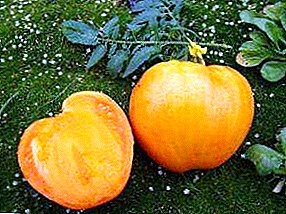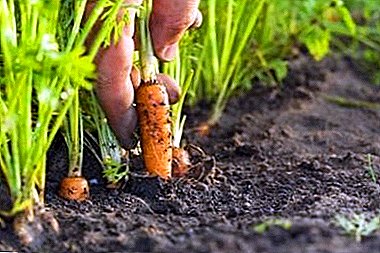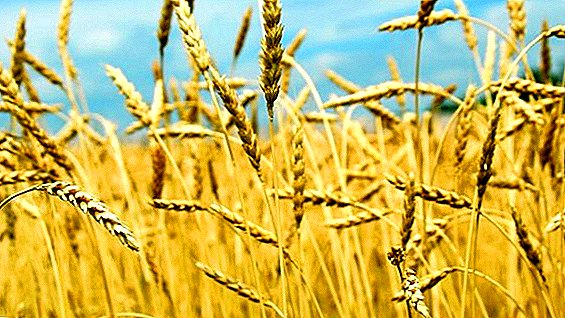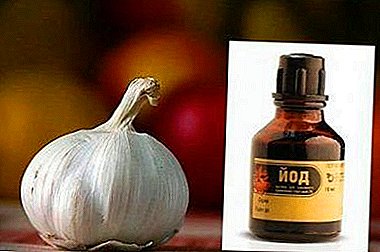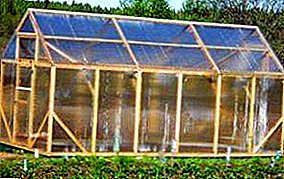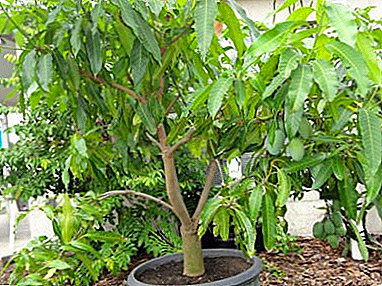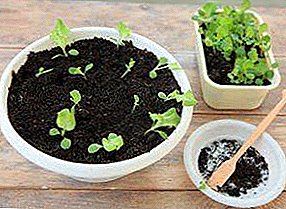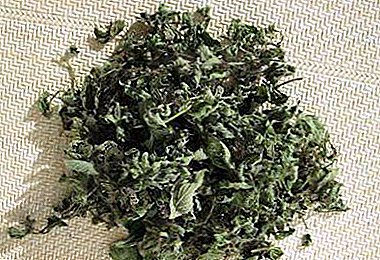
Melissa is used in cooking and traditional medicine. In order to have this fragrant grass on hand all year round, you can dry it for the future.
Benefit the health will bring only raw materials harvested by all the rules. The quality of the resulting blanks is influenced by factors such as collection time, method of drying and compliance with the storage conditions of lemon balm.
This article provides helpful recommendations on how to dry lemon balm at home.
Advantages and disadvantages of drying in relation to other methods of preparation
 Drying lemon balm is a great way to harvest for the winter:
Drying lemon balm is a great way to harvest for the winter:
- Compared to frozen grass, much more useful substances are stored in all the dried grass.
- No need to allocate space in the refrigerator and freezer for storage of blanks.
The method is not perfect:
- In the process of drying naturally, the grass takes up a lot of space.
- In the case of high humidity and dampness in the room increases the risk of losing the entire batch.
- When drying in the oven, the medicinal value of the raw material is reduced.
When is it best to collect - before or after flowering?
The most good time to harvest for drying - the period of active flowering. At this moment, the aboveground part of the plant is maximally saturated with vitamins, microelements and biologically active substances. Melissa begins to bloom in the second year after planting. Flowering lasts from mid-June to August. Leaves are recommended to be collected when the grass has just blossomed. All aboveground parts are cut off at any time of flowering.
Young leaves of medium size contain the maximum amount of nutrients. By the end of flowering leaves become coarse and the concentration of valuable components in them decreases.
What varieties are suitable and what to do with the raw materials?
 Melissa collected in clear dry weather, in the first half of the day. The optimal time is 10-11 am, when the dew dries out and the sun is still not burning with rays. Leaves, flowers and stems should not be moisture. If you collect the branches and leaves wet, in the process of drying, they can rot and moldy. It is impossible to cut stalks with diseased, yellowed or damaged leaves for harvesting. Substandard leaves found after harvesting should be discarded.
Melissa collected in clear dry weather, in the first half of the day. The optimal time is 10-11 am, when the dew dries out and the sun is still not burning with rays. Leaves, flowers and stems should not be moisture. If you collect the branches and leaves wet, in the process of drying, they can rot and moldy. It is impossible to cut stalks with diseased, yellowed or damaged leaves for harvesting. Substandard leaves found after harvesting should be discarded.
Do I need to wash before drying? It is not recommended to wash the greens after harvesting - to dry such raw materials is very difficult. If the leaves are dirty, you can pre-pour them from a watering can or a hose, let them dry well under the wind and sun and only then collect.
Sprigs are cut with a sharp knife or sickle. Cut the shoots are placed in the shade for easy drying, then transferred to a permanent place of drying.
The following varieties of lemon balm are suitable for use in dried form.:
- Dosing.
- Pearl.
- Isidora.
- Quadrille.
- Lemon flavor.
- Freshness.
- Tsaritsyn Semko.
Where it is better to carry out the process and how to?
You can dry the crop on the street or indoors. Outside, Melissa is laid out in a shade on a pallet with a thin layer. Instead of a pallet using a sheet of plywood or cardboard. From above melissa is covered with a net or natural fabric to protect from insects and dust. You can hang bundles on a rope under a canopy.
The main conditions for drying in the room - good air circulation and protection from sunlight. For this purpose, the attic is perfect.
In bunches
How to dry at home:
- Choose a dry, warm, shaded room, where air circulates well.
- Cut off several young stems with leaves and flowers.
- Take no more than 10 stems and collect in a bunch.
- Tie the thread or rope is not too tight.
- Hang beams to the ceiling tops down.
 You can not collect too large bundles. The stalks inside the ligaments may fade or mold.
You can not collect too large bundles. The stalks inside the ligaments may fade or mold.
Advantages of the method:
- It is not required to occupy horizontal surfaces under drying of raw materials.
- In a lemon balm a large number of useful components remains.
disadvantages:
- It can only be used when the leaves are not separated from the stalks.
- Plants need to regularly review and remove leaves that have deteriorated.
On a horizontal surface
- Choose a dry, warm place with good access to fresh air and no direct sunlight.
- Spread white paper or a clean cloth on the surface.
- Top spread out a thin layer of lemon balm.
- Drying takes an average of 3-4 days. It is necessary to daily stir and turn the raw material so that it does not start to deteriorate. Inspect for mold and black spots.
Instead of a pallet it is convenient to use hammocks made of mesh. Such a device does not interfere with air circulation. Tilling grass is not required.
Merits:
- Melissa dries quickly - from 2 to 7 days.
- With the natural method of drying, most of the nutrients are retained.
disadvantages:
- Need a lot of space.
- It is required to constantly monitor the state of raw materials.
In the oven or special apparatus
In the oven
- Spread sliced lemon balm on a baking sheet with a thin layer.
- Keep in a slightly heated oven at a temperature of 45-50 ° for 2-3 hours. Leave the door ajar. Periodically mix lemon balm.
In the electric dryer
- Place chopped raw material in a thin layer of pallets.
- Set the temperature to 30 °.
- Dry 2-2.5 hours.
In the microwave
- Spread the leaves in a thin layer of cotton.
- Cover the top with the same material.
- Place on a plate in the microwave.
- Turn on the device for 2 minutes.
- Take out the raw materials and hold one day in the room.
Experts do not recommend drying the lemon balm in the furnaces. At a temperature of 35 ° and above in the raw materials are destroyed nutrients.
Advantages of the method:
- The method allows to save time for drying.
- No need to allocate a special place, to lay out and check the raw materials.
The disadvantage is the loss of a large proportion of nutrients. The quality of raw materials is lower than when drying in the open air.
Features: how to harvest for the winter for tea?
 For tea, only gentle leaves are collected.. Harvesting should begin as early as possible - before the plant goes into growth.
For tea, only gentle leaves are collected.. Harvesting should begin as early as possible - before the plant goes into growth.
Collected leaves are laid out in one thin layer on a clean cloth or white paper, away from direct sunlight. From time to time they turn over and inspect. The drying process takes less than a week.
If the collection is tightened, the branches are cut, and after drying, the leaves are separated from them. The blanks are placed in tin or glass jars or in bags of cotton or flax. The shelf life of raw materials for tea is no longer than 1 year..
We offer to watch a video on how to properly prepare lemon balm for the winter for tea:
How to store?
Melissa is ready when her color turns pale green, when you press the stems break, and the leaves crumble. If you plan to use dried raw materials as seasoning, it is ground in the palms to fine chips. Then fall asleep in a dry clean container and tightly closed. On the container stick a tag indicating the name of the grass and the date of harvesting.
The following container is suitable for storage.:
- glass jars with a tight-fitting lid;
- paper bags;
- wooden vessels;
- carton boxes;
- linen bags.
Tara with melissa kept in a dark, cool place with low humidity. If the spice is stored in paper bags or in cloth bags, other dried greens and strong smell products should not be placed nearby. In good conditions, dried lemon balm retains its properties and flavor for 2 years. It is not recommended to keep grass for ingestion longer. The largest amount of nutrients is present in dried lemon balm in the first year of storage, then the concentration of valuable components gradually decreases.
Dried leaves intended for tea, you can not chop before being sent to storage. In this case, it is sometimes necessary to check their condition and remove poor-quality leaves. Raw tea kept for one year.
How can I use and what dishes can I add?
Dried lemon balm is a popular ingredient for brewing tea. It is also used as a seasoning for many dishes - combined with eggs, poultry, fish, beef, lamb, pork, mushrooms. Dried lemon balm is placed in hot dishes for 2-3 minutes until cooked. In addition, it is used for canning, pickling and pickling. Dried lemon balm make refreshing lemonade and kvass.
Drying lemon balm is better in natural conditions., without the help of furnaces and special devices. This particular herb has medicinal value. If you choose a good time to collect, properly prepare and store raw materials, you can enjoy fragrant tea and a variety of dishes with melissa all year round.


